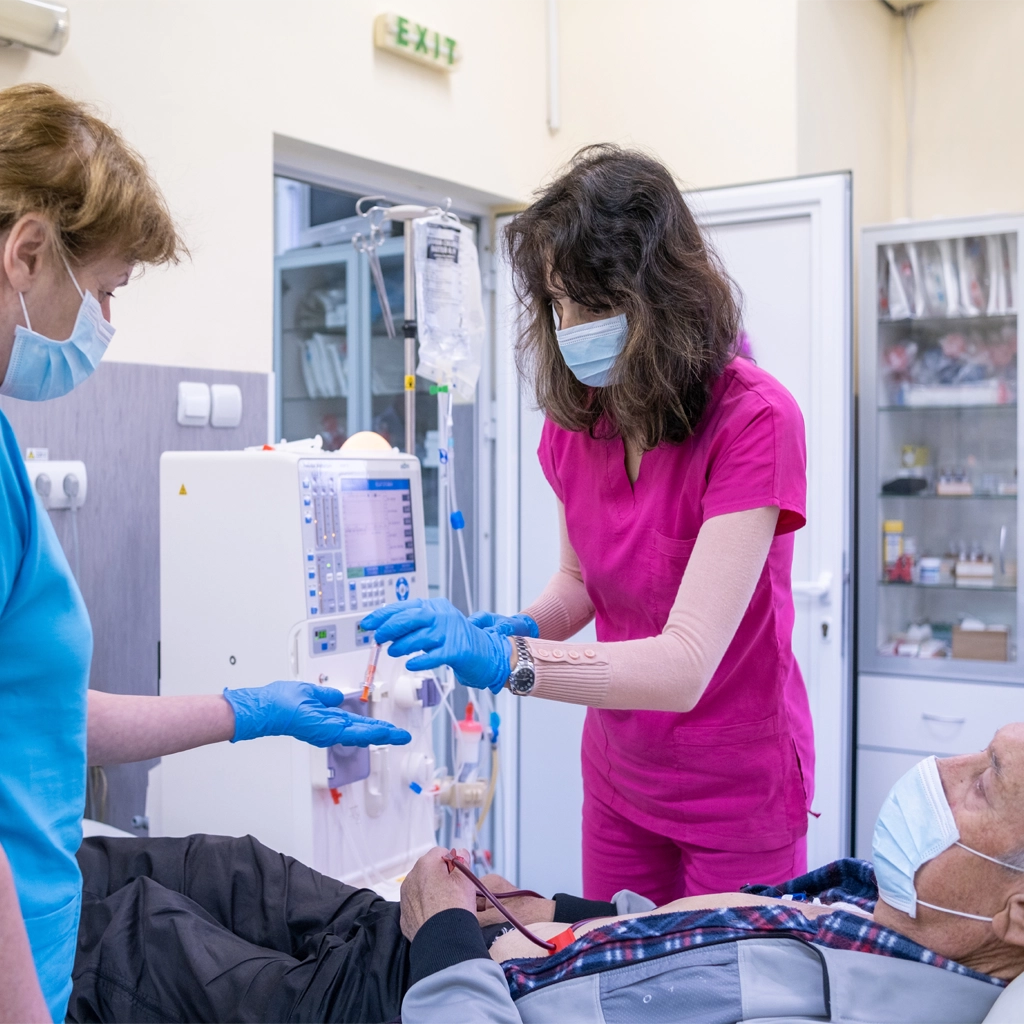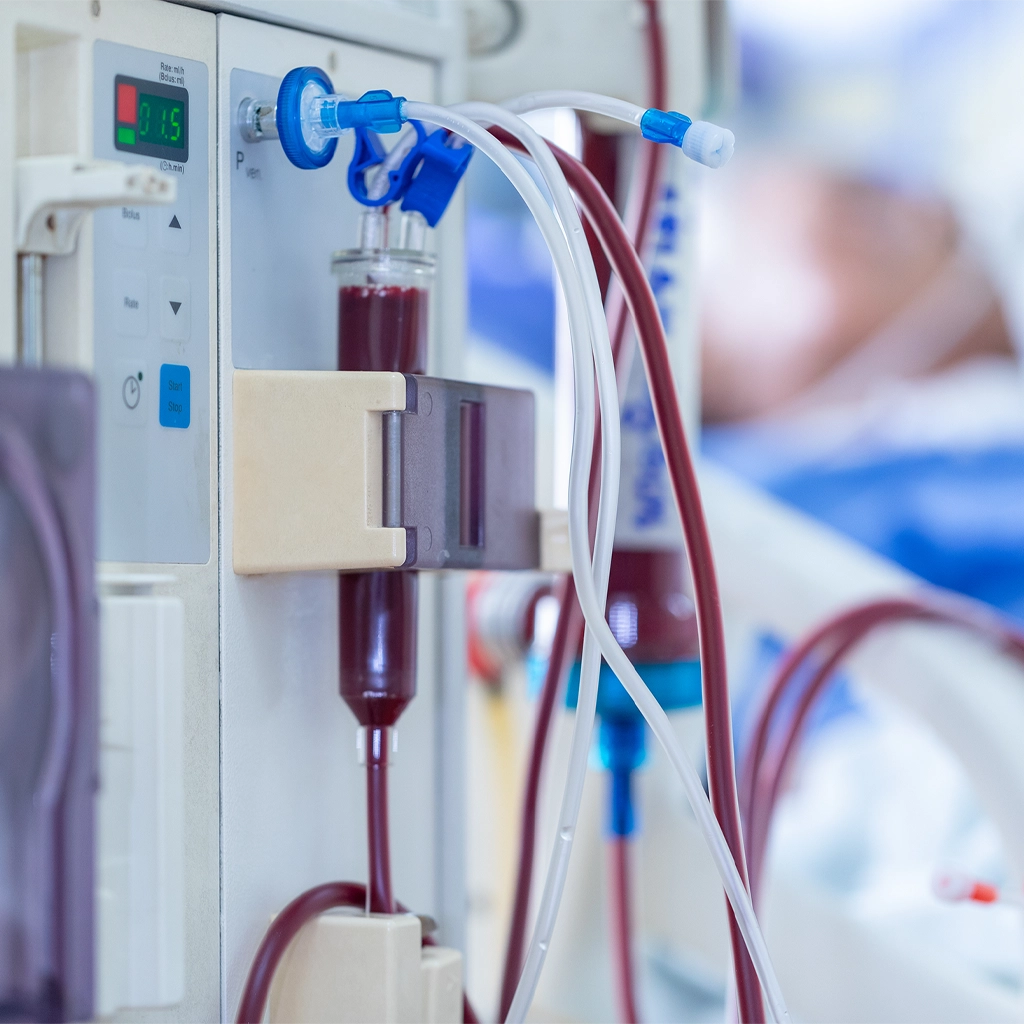Dialysis Planning and Access
If your kidneys fail, unless and until you have a successful kidney transplant, you will need dialysis therapy to clean and filter your blood. Dialysis requires ongoing access to your body’s major blood vessels, using one of the following approaches:
- A tunneled catheter in your neck—this approach is temporary, because the possibility of infection is high. It is typically used for someone in need of immediate dialysis who has not yet received a more permanent access solution.
- An AV fistula—an arteriovenous (AV) fistula is created by taking a piece of a vein from your arm or leg and sewing it into a nearby artery. This allows the sewn-in vein to enlarge and become thicker, like an artery. It is considered the best option for hemodialysis because it has the lowest risk of infection, and the greatest long term result
- An AV graft—the sewing of a prosthetic graft between an artery and vein in your arm or leg. This is the preferred option if your veins are too small for an AV fistula. AV grafts tend to close more quickly and are more prone to infection because they are not formed from natural tissue.
- A Percutatious Fistula—for many patients their veins are large enough to create a special fistula with a single needle stick under local anesthesia in the office.


